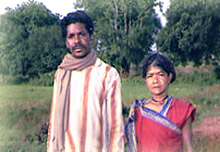 The Bagata tribes are regarded to be one of the aboriginal tribes and also are one of the Scheduled tribes of India. The tribal communities reside in different sectors of Orissa and apart from that, they are also found in Andhra Pradesh. This tribal community is also known by the names of Bagatha, Bhakta, Bagat, Bagodi, or Bogad.
The Bagata tribes are regarded to be one of the aboriginal tribes and also are one of the Scheduled tribes of India. The tribal communities reside in different sectors of Orissa and apart from that, they are also found in Andhra Pradesh. This tribal community is also known by the names of Bagatha, Bhakta, Bagat, Bagodi, or Bogad.
The Bagata tribes have undertaken the profession of farming in order to sustain the requirements of their day-to-day living. Festivals, dance as well as musical bonanza make the culture of these Bagata tribes quite exquisite. Special mentioning is required about the Dhimsa dance that has been practiced in the Bagata tribal society. It is a dance form where Bagata tribes of all ages starting from eight to eighty, participate quite energetically. During the months of Chaitra (March to April), these Bagata tribes dance on the occasions of weddings and also at joyful social functions.
The unique feature of Dhimsa dance is that it spread the spirit of friendship and alliance between the people residing in the nearby villages. Since this is a traditional form of dance of Bagata tribes, the female folks dress up in distinctive tribal clothes and also wear beautiful ornaments. All the Bagata dancers dance in the rhythm of Mori, Kiridi, Tudumu, Dappu and Jodukommulu.
Moreover, during the festive season, there is a popular trend where the dancers from a Bagata village go on a trip to another village in order to take part in the dance and also to participate in the community feast. These dance forms of the Bagata tribes are popularly known as `Sankidi Kelbar`. Most of the Bagata tribes are Hindus and they also worship Hindu gods and goddess along with their tribal deities.
The people of the Bagata tribe converse with each other in the `corrupted form` of Oriya language though their main language is Telugu. Adivasi Oriya is their local dialect. Various dialects too have originated and gained popularity amongst the Bagata tribes. Just like any other tribal communities of Orissa, the structure of the social hierarchy also is present among the Bagata tribes.





















